#wrekin
Explore tagged Tumblr posts
Link
#stephen king#kim possible#tumblr poem#wrekin#denim#wrestling#knocked loose#tattoos#sephora#greeneyes#my art uwu#nakdfashion#natural glam#koogi#vintage
340 notes
·
View notes
Text
At Wroxeter
At Wroxeter Sleep Roman women Roman men ~ Under the eyes Of God And Wrekin ~ And Caradoc hill Looks down so still On all of humanity so lowly ~ Over the slowly Sleeping souls of Romans, Us, and of the Lawley. ~
1 note
·
View note
Text
SO UH.... UPDATE? I GUESS THE OTHERS WHO THOUGHT ME N PYRO ( @kittyfirebug) WERE A THING HAD A DAMN POINT-

datin your best pal really is a great plan!! SO SORRY EVERYONE! LOOKS LIKE IM TAKEN!
#talkin time#drawings from me!!!!#THIS IS A NERVE WREKIN ANNOUNCEMENT I CANT LIE#//#tf2#team fortress 2#tf2 scout#tf2 ask blog#tf2 rp blog
8 notes
·
View notes
Text
"Sometimes referred to as Dary or Davy pit in the sources, it is rarely mentioned without reference to strange events and portentous presences. One witness remarked that ‘It is a weird place enough’…"
3 notes
·
View notes
Text

today was a lovely day to be out
1 note
·
View note
Text
The Government has been urged to be “on the right side of history” and “stand up for life” in Gaza.
Conservative [sic] MP for The Wrekin Mark Pritchard said he had supported Israel for decades, but that in light of the state’s actions in Palestine he “got it wrong”.[...]
On Tuesday, Mr Pritchard told the Commons: “Of course, Israel is an important security, trade and democratic partner, but that doesn’t give it a blank cheque.
“The fact is that 13,000 children have been killed. Some 25,000 have been injured, maimed, wounded, orphaned – some of them.
“And for many years, I’ve been in this House 20 years, I have supported Israel pretty much at all costs quite frankly.
“But today I want to say that I got it wrong and I condemn Israel for what it is doing to the Palestinian people in Gaza, and indeed in the West Bank, and I’d like to withdraw my support right now for the actions of Israel, what they are doing right now in Gaza.[...]
“And this particular moment in time, we’ve had lots of statements over the last 18 months. This is not only this Parliament’s not greatest hour, I’m really concerned that this is a moment in history when people look back – well we’ve got it wrong as a country.
“Can the minister stand up to our friends and allies in the United States and make a strong stand for humanity, for us being on the right side of history, for having the moral courage to lead, not just to follow the United States and to make a difference?[...]
Former Labour leader Jeremy Corbyn reiterated his call for the Government to end arms sales to Israel, highlighting that the state has dropped bombs on Gaza equivalent to “five times of the power of the nuclear weapons used over Hiroshima and Nagasaki”.
The independent MP for Islington North said: “This surely is a time for the British Government to say, no. No more, no weapons, no cooperation, no support, until we save lives in Gaza and of course, in the West Bank. Now is the time to say and do that.”[...]
Ian Byrne (Liverpool West Derby) said “we will be judged in history for the failure of the Palestinian people in this House”, while Uma Kumaran (Stratford and Bow) said “the time has come for significant action in the face of crimes that had they been committed by any other country, we would have already done something about”.
Liberal Democrat MP for Newbury Lee Dillon said MPs from across the House were “pleading” with the Government to “take action” on their behalf.
6 May 25
157 notes
·
View notes
Text
Imagining them going duo >>>


This two would be wrekin your house before u know but kinda hard to imagine how they'll be as a duo ... It's like the brain and the beast together


#demon slayer#kimetsu no yaiba#kny#demon slayer hashira#kny spoilers#anime#shinobu smut#shinobu x reader#shinobu kochou#kochou shinobu#kny shinobu#kocho shinobu#shinobu kocho#shinobu sengoku#demon slayer shinobu#shinazugawa sanemi#kny sanemi#sanemi shinazugawa#sanemi#demon slayer sanemi#sanemi shinaguzawa#kimetsu no yaiba sanemi#sanemi shinazugawa x reader#sanemi smut#sanemi x reader#sanemi x you#knyedit#kny au#kny memes#demon slayer anime
127 notes
·
View notes
Text
I've mentioned the fairy tale of "Snow White and Rose Red" before, which has seemingly a different character from the "evil queen jealous of her beauty" Snow White , so I thought I'd share it here. (I found the text here.)
There was once a poor widow who lived in a lonely cottage. In front of the cottage was a garden wherein stood two rose-trees, one of which bore white and the other red roses. She had two children who were like the two rose-trees, and one was called Snow-white, and the other Rose-red. They were as good and happy, as busy and cheerful as ever two children in the world were, only Snow-white was more quiet and gentle than Rose-red. Rose-red liked better to run about in the meadows and fields seeking flowers and catching butterflies; but Snow-white sat at home with her mother, and helped her with her house-work, or read to her when there was nothing to do.
The two children were so fond of each another that they always held each other by the hand when they went out together, and when Snow-white said, "We will not leave each other," Rose-red answered, "Never so long as we live," and their mother would add, "What one has she must share with the other."
They often ran about the forest alone and gathered red berries, and no beasts did them any harm, but came close to them trustfully. The little hare would eat a cabbage-leaf out of their hands, the roe grazed by their side, the stag leapt merrily by them, and the birds sat still upon the boughs, and sang whatever they knew.
No mishap overtook them; if they had stayed too late in the forest, and night came on, they laid themselves down near one another upon the moss, and slept until morning came, and their mother knew this and had no distress on their account.
Once when they had spent the night in the wood and the dawn had roused them, they saw a beautiful child in a shining white dress sitting near their bed. He got up and looked quite kindly at them, but said nothing and went away into the forest. And when they looked round they found that they had been sleeping quite close to a precipice, and would certainly have fallen into it in the darkness if they had gone only a few paces further. And their mother told them that it must have been the angel who watches over good children.
Snow-white and Rose-red kept their mother's little cottage so neat that it was a pleasure to look inside it. In the summer Rose-red took care of the house, and every morning laid a wreath of flowers by her mother's bed before she awoke, in which was a rose from each tree. In the winter Snow-white lit the fire and hung the kettle on the wrekin. The kettle was of copper and shone like gold, so brightly was it polished. In the evening, when the snowflakes fell, the mother said, "Go, Snow-white, and bolt the door," and then they sat round the hearth, and the mother took her spectacles and read aloud out of a large book, and the two girls listened as they sat and span. And close by them lay a lamb upon the floor, and behind them upon a perch sat a white dove with its head hidden beneath its wings.
One evening, as they were thus sitting comfortably together, some one knocked at the door as if he wished to be let in. The mother said, "Quick, Rose-red, open the door, it must be a traveller who is seeking shelter." Rose-red went and pushed back the bolt, thinking that it was a poor man, but it was not; it was a bear that stretched his broad, black head within the door.
Rose-red screamed and sprang back, the lamb bleated, the dove fluttered, and Snow-white hid herself behind her mother's bed. But the bear began to speak and said, "Do not be afraid, I will do you no harm! I am half-frozen, and only want to warm myself a little beside you."
"Poor bear," said the mother, "lie down by the fire, only take care that you do not burn your coat." Then she cried, "Snow-white, Rose-red, come out, the bear will do you no harm, he means well." So they both came out, and by-and-by the lamb and dove came nearer, and were not afraid of him. The bear said, "Here, children, knock the snow out of my coat a little;" so they brought the broom and swept the bear's hide clean; and he stretched himself by the fire and growled contentedly and comfortably. It was not long before they grew quite at home, and played tricks with their clumsy guest. They tugged his hair with their hands, put their feet upon his back and rolled him about, or they took a hazel-switch and beat him, and when he growled they laughed. But the bear took it all in good part, only when they were too rough he called out, "Leave me alive, children,
"Snowy-white, Rosy-red, Will you beat your lover dead?"
When it was bed-time, and the others went to bed, the mother said to the bear, "You can lie there by the hearth, and then you will be safe from the cold and the bad weather." As soon as day dawned the two children let him out, and he trotted across the snow into the forest. Henceforth the bear came every evening at the same time, laid himself down by the hearth, and let the children amuse themselves with him as much as they liked; and they got so used to him that the doors were never fastened until their black friend had arrived.
When spring had come and all outside was green, the bear said one morning to Snow-white, "Now I must go away, and cannot come back for the whole summer."
"Where are you going, then, dear bear?" asked Snow-white. "I must go into the forest and guard my treasures from the wicked dwarfs. In the winter, when the earth is frozen hard, they are obliged to stay below and cannot work their way through; but now, when the sun has thawed and warmed the earth, they break through it, and come out to pry and steal; and what once gets into their hands, and in their caves, does not easily see daylight again."
Snow-white was quite sorry for his going away, and as she unbolted the door for him, and the bear was hurrying out, he caught against the bolt and a piece of his hairy coat was torn off, and it seemed to Snow-white as if she had seen gold shining through it, but she was not sure about it. The bear ran away quickly, and was soon out of sight behind the trees.
A short time afterwards the mother sent her children into the forest to get fire-wood. There they found a big tree which lay felled on the ground, and close by the trunk something was jumping backwards and forwards in the grass, but they could not make out what it was. When they came nearer they saw a dwarf with an old withered face and a snow-white beard a yard long. The end of the beard was caught in a crevice of the tree, and the little fellow was jumping backwards and forwards like a dog tied to a rope, and did not know what to do.
He glared at the girls with his fiery red eyes and cried, "Why do you stand there? Can you not come here and help me?"
"What are you about there, little man?" asked Rose-red.
"You stupid, prying goose!" answered the dwarf; "I was going to split the tree to get a little wood for cooking. The little bit of food that one of us wants gets burnt up directly with thick logs; we do not swallow so much as you coarse, greedy folk. I had just driven the wedge safely in, and everything was going as I wished; but the wretched wood was too smooth and suddenly sprang asunder, and the tree closed so quickly that I could not pull out my beautiful white beard; so now it is tight in and I cannot get away, and the silly, sleek, milk-faced things laugh! Ugh! how odious you are!"
The children tried very hard, but they could not pull the beard out, it was caught too fast. "I will run and fetch some one," said Rose-red.
"You senseless goose!" snarled the dwarf; why should you fetch some one? You are already two too many for me; can you not think of something better?"
"Don't be impatient," said Snow-white, "I will help you," and she pulled her scissors out of her pocket, and cut off the end of the beard.
As soon as the dwarf felt himself free he laid hold of a bag which lay amongst the roots of the tree, and which was full of gold, and lifted it up, grumbling to himself, "Uncouth people, to cut off a piece of my fine beard. Bad luck to you!" and then he swung the bag upon his back, and went off without even once looking at the children.
Some time after that Snow-white and Rose-red went to catch a dish of fish. As they came near the brook they saw something like a large grasshopper jumping towards the water, as if it were going to leap in. They ran to it and found it was the dwarf.
"Where are you going?" said Rose-red; "you surely don't want to go into the water?"
"I am not such a fool!" cried the dwarf; don't you see that the accursed fish wants to pull me in?" The little man had been sitting there fishing, and unluckily the wind had twisted his beard with the fishing-line; just then a big fish bit, and the feeble creature had not strength to pull it out; the fish kept the upper hand and pulled the dwarf towards him. He held on to all the reeds and rushes, but it was of little good, he was forced to follow the movements of the fish, and was in urgent danger of being dragged into the water.
The girls came just in time; they held him fast and tried to free his beard from the line, but all in vain, beard and line were entangled fast together. Nothing was left but to bring out the scissors and cut the beard, whereby a small part of it was lost. When the dwarf saw that he screamed out, "Is that civil, you toad-stool, to disfigure one's face? Was it not enough to clip off the end of my beard? Now you have cut off the best part of it. I cannot let myself be seen by my people. I wish you had been made to run the soles off your shoes!" Then he took out a sack of pearls which lay in the rushes, and without saying a word more he dragged it away and disappeared behind a stone.
It happened that soon afterwards the mother sent the two children to the town to buy needles and thread, and laces and ribbons. The road led them across a heath upon which huge pieces of rock lay strewn here and there. Now they noticed a large bird hovering in the air, flying slowly round and round above them; it sank lower and lower, and at last settled near a rock not far off. Directly afterwards they heard a loud, piteous cry. They ran up and saw with horror that the eagle had seized their old acquaintance the dwarf, and was going to carry him off.
The children, full of pity, at once took tight hold of the little man, and pulled against the eagle so long that at last he let his booty go. As soon as the dwarf had recovered from his first fright he cried with his shrill voice, "Could you not have done it more carefully! You dragged at my brown coat so that it is all torn and full of holes, you helpless clumsy creatures!" Then he took up a sack full of precious stones, and slipped away again under the rock into his hole. The girls, who by this time were used to his thanklessness, went on their way and did their business in the town.
As they crossed the heath again on their way home they surprised the dwarf, who had emptied out his bag of precious stones in a clean spot, and had not thought that anyone would come there so late. The evening sun shone upon the brilliant stones; they glittered and sparkled with all colors so beautifully that the children stood still and looked at them.
"Why do you stand gaping there?" cried the dwarf, and his ashen-gray face became copper-red with rage. He was going on with his bad words when a loud growling was heard, and a black bear came trotting towards them out of the forest. The dwarf sprang up in a fright, but he could not get to his cave, for the bear was already close.
Then in the dread of his heart he cried, "Dear Mr. Bear, spare me, I will give you all my treasures; look, the beautiful jewels lying there! Grant me my life; what do you want with such a slender little fellow as I? you would not feel me between your teeth. Come, take these two wicked girls, they are tender morsels for you, fat as young quails; for mercy's sake eat them!" The bear took no heed of his words, but gave the wicked creature a single blow with his paw, and he did not move again.
The girls had run away, but the bear called to them, "Snow-white and Rose-red, do not be afraid; wait, I will come with you." Then they knew his voice and waited, and when he came up to them suddenly his bearskin fell off, and he stood there, a handsome man, clothed all in gold. "I am a King's son," he said, "and I was bewitched by that wicked dwarf, who had stolen my treasures; I have had to run about the forest as a savage bear until I was freed by his death. Now he has got his well-deserved punishment."
Snow-white was married to him, and Rose-red to his brother, and they divided between them the great treasure which the dwarf had gathered together in his cave. The old mother lived peacefully and happily with her children for many years. She took the two rose-trees with her, and they stood before her window, and every year bore the most beautiful roses, white and red.
#fairy tales#folktales#snow white#rose red#I love how they hastily invent another guy at the end so Rose Red can also have a royal wedding
14 notes
·
View notes
Text
“In art I came top of the form and I was glad because although I had accepted defeat in a very wide range of subjects, I had always wanted to be best at something.
And on the basis of proficiency with paint and paper, at the age of sixteen, and before sitting for what was then the School Certificate examination, I wrote home and asked to be taken away from school so that I could become a dress designer.
This caused a great deal of distress. The masters at Wrekin naturally thought it was ruinous to leave school without a single qualification and there was, to their minds, nothing less manly than dress designing.
My father agreed, and he had an additional anxiety, for he believed such a job would not only not pay enough, but, worse, could lead me into unemployment. Thus, I did not become one.
Although I knew good design from bad, though I could create dresses and draw them, though to be a dress designer was all I wanted to be, I went - in that curiously illogical way of the son and heir - into the family business for which I neither cared nor in which I expected to succeed.”
-Brian Epstein, A Cellarful Of Noise
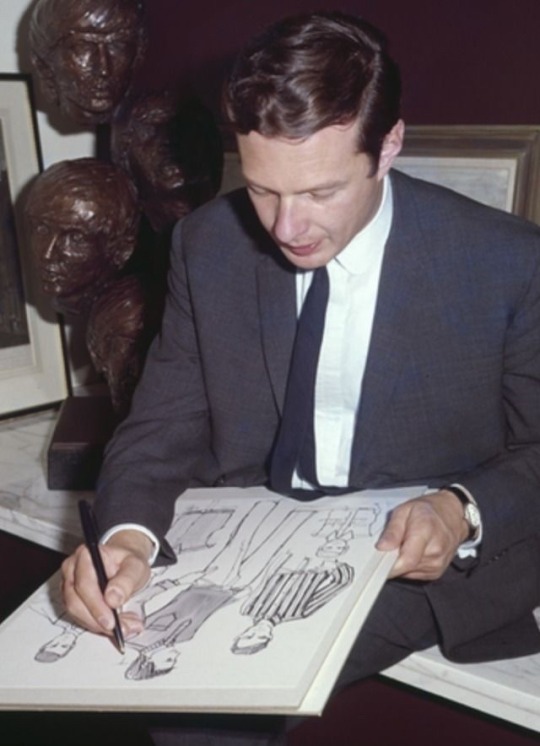
#brian epstein#the beatles#a cellarful of noise#i’m literally crying#in another universe he achieved his dream :(#let him be a dress designer!!!!
60 notes
·
View notes
Text
Greenness is All About Us
Greenness is all about us in nature, and especially so in Shropshire now that summer is here! This poem I think is self-explanatory, and the photo of The Wrekin, seen from The Lawley, tries to capture a landscape full of so many different shades of green! ~ The greenness is all about me growth exploding from the silent being of the…

View On WordPress
1 note
·
View note
Text
Square/Prompt: D1 knight Hob, replacing sexline
Title: A Giant Problem
Rating: G
Ship(s): Dream of the Endless/Hob Gadling
Warnings: n/a
Additional Tags: Legends, the legend of the giant of Shrewsbury, Missing Scene, more anachronistic language
Summary: Part way through his quest to find the chapel of the Black Knight, Sir Robert and his bard encounter a very angry giant who is hell bent on destroying the nearby town of Shrewsbury
A 'missing scene' from my fic, Sir Robert and the Black Knight, but can probably be read just fine without reading that first. This is a short retelling of the Legend of the Giant and the Cobbler, but Dreamling.
Link to ao3
for @dreamlingbingo
Chapter 1
Sir Robert Gadling, knight of Camelot, has a date with destiny. 11 months ago, he rather foolishly chopped the head of a mysterious stranger at King Arthur’s Christmas Feast and is currently on a quest to meet said decapitated stranger at the Black Chapel on New Year’s Day and face his retribution.
New Year’s Day is still a month off, though, and for the preceding four weeks, Sir Robert- or Hob, as he prefers- has been led a merry dance around the countryside by another mysterious stranger, a nameless bard, who had latched himself onto Hob as soon as the knight departed Camelot and whose sole purpose in life seems to now be to get Hob to the Black Chapel by the most dangerous and indirect means possible.
When they arrived in the town of Shrewsbury, Hob was entirely sure there’d be something he’d need to face or fix in the town. Since his peculiar bard had placed himself in charge of their destinations over the last month, he had done his level best to put Hob in some sort of predicament wherever they went.
Not here though. They’d ridden in early the previous afternoon, found a room at an inn, ate the best meal of Hob’s life (four weeks of unseasoned winter-thin rabbits and whatever other meagre sustenance the land could offer turned any other meal into a feast) and slept undisturbed all night on mattresses that were ostensibly stuffed with straw but could well have been clouds considering how favourably they’d compared to the frost hard ground Hob was used to. All in all, after a morning spent exploring this pleasant, bustling market town and not once having to leap dramatically to anyone’s rescue, Hob was feeling well rested, well fed and well content.
As they ride out of the town walls after a magnificent lunch of mutton stew and fresh bread slathered in honest to goodness butter , Hob remarks upon this good fortune to his companion, who favours him with one of his mysterious smiles and heels his mule on faster. Hob follows, still chattering away. His bard lets him talk offering very little in the way of response, and they ride for some time like this, putting some little distance between themselves and the town as the afternoon wears on
“I mean, no foul fiends?!” Hob says, flinging out an arm in a dramatic gesture. “Come on, Ben Beirdd, not even any pesky piskies? I expected something , at least.”
“There are no piskies this far North,” his bard replies serenely “And as for foul fiends-”
“I don’t think I’ve seen a more thriving place outside of Camelot,” Hob interrupts, and lets Gringolet follow the bard’s mule as he finally swings off the main path and down into the forest surrounding the road. “I know they get the trade off of the river, so it makes sense for a settlement to be here, but this area is well known for being giant country… how has the town survived? I didn’t even see any fortifications?”
“An excellent question,” his bard murmurs, turning to fix Hob with his intense stare. His eyes, always slightly otherworldly, Hob thinks, are the only bright thing in this dead winter woodland. They seem to gather all the light and gleam, despite the overcast weather. “The answer being that the citizens of the town made a deal.”
“A deal?” Hob repeats
“Indeed.”
“A deal. With… the giants?”
“With one giant. His name is Gwendol Wrekin ap Shenkin ap Myndmawr. A most unpleasant sort, by all accounts. Even by giant standards.”
“What sort of deal?” Hob asks uneasily.
“Maidens.”
“Maidens?”
“Yes, Sir Robert. Maidens. Must you repeat everything I say?”
“What do you mean, they made a deal with maidens?” Hob says slowly, though he rather suspects the answer. His bard looks at him and purses his lips.
“I believe the terms of the deal were that the mayor of Shrewsbury would provide a steady supply of maidens for Gwendol and in return he would refrain from ‘smashing up the town.’” These last words were clearly some sort of direct quotation, and Hob inhales sharply, opening his mouth to say something, but his bard puts up a hand to stop him, and continues.
“To forestall your next inane questions, Sir knight, yes the maidens were eaten by the giant and no, the mayor did not know that was happening to them.” He snorted derisively, “Well, that is what he claims. What else he thought was happening to the stream of young women leaving the town to seek the giant and never returning, I do not know.”
Beneath him, Gringolet snorts and dances a few steps, no doubt sensing the tension of his rider. Hob deliberately unclenches his hands on the reins and gives the horse his head. Sending their womenfolk as tribute… how many women have died for this? How have the citizens not revolted? Surely they know? It cannot be a secret. “Wait,” he says suddenly, whipping round to meet his bard’s eyes again. “You kept saying ‘were’. What has happened? Has the deal been broken?”
Ben Beirdd smiles thinly. “Quite. A young woman recently returned to the town. The very first to do so. A clever woman, and a cunning one. She at least recognised that no woman ever returned and, knowing much of herblore, concealed about her person some plants with which she brewed the giant a potent sleeping draught. How she persuaded him to drink it is unclear; she is clearly a remarkable woman, but drink it he did, and while he was asleep she stole away and returned to Shrewsbury with her tale… now the truth of the deal is out in the open, and the mayor will not risk the ire of his people by sending any more maidens.”
“Christ on the cross,” Hob says fervently, “What will happen to them now? I can’t see the giant taking kindly to a sudden cessation in his food supply.”
They emerge from the trees quite suddenly and the view opens up before them. Hob draws rein with a muttered curse, hand leaping to his sword. Because there, not a quarter mile distant, sits the slumped shape of a truly enormous giant. He is clearly sleeping, head tilted forward against his chest, rumbling snores clearly audible even at this distance; and beside him on the ground rests a humongous spade piled high with a great mound of earth.
“No,” Ben Beirdd says mildly as he stops his mule beside Hob’s stallion, “I do not believe he is taking kindly to it at all.”
10 notes
·
View notes
Text


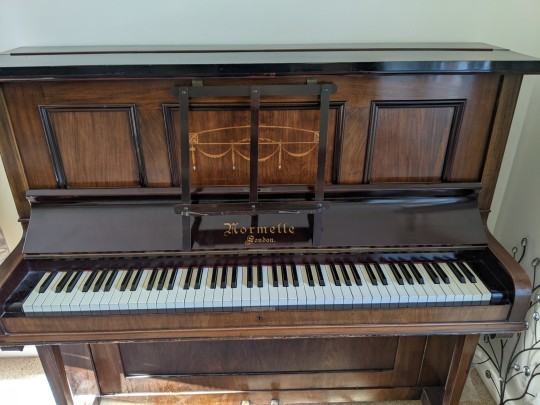
Piano Tuner in Newport Telford and Wrekin, Shropshire.
Tuning a 'Normelle. ' upright piano Dating from 1921.
www.matthewjamesrichards.co.uk
#pianotuners #pianotuner #pianotuning #musicians #music #pianist #piano #bentley #repair #newport #telford #shropshire #pianoplayer #normelle
#Normelle#piano#piano tuner#piano tuning#piano music#pianist#upright piano#Newport#Telford#piano tuners#wolverhampton#music#piano tuner wolverhampton
5 notes
·
View notes
Text
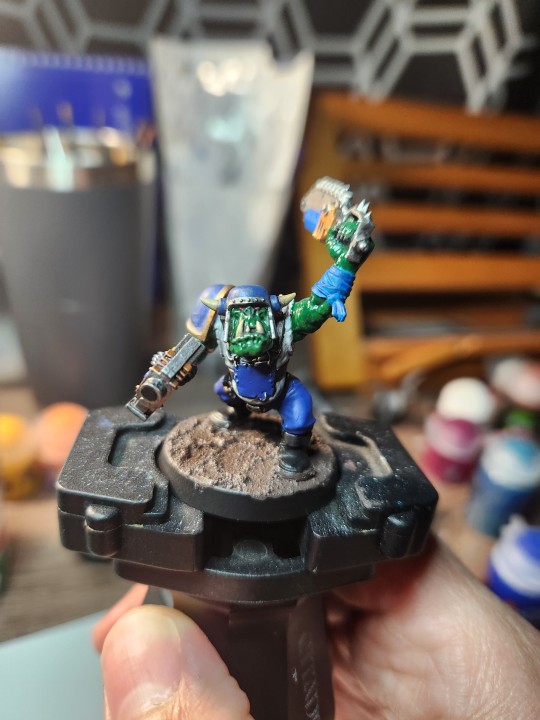
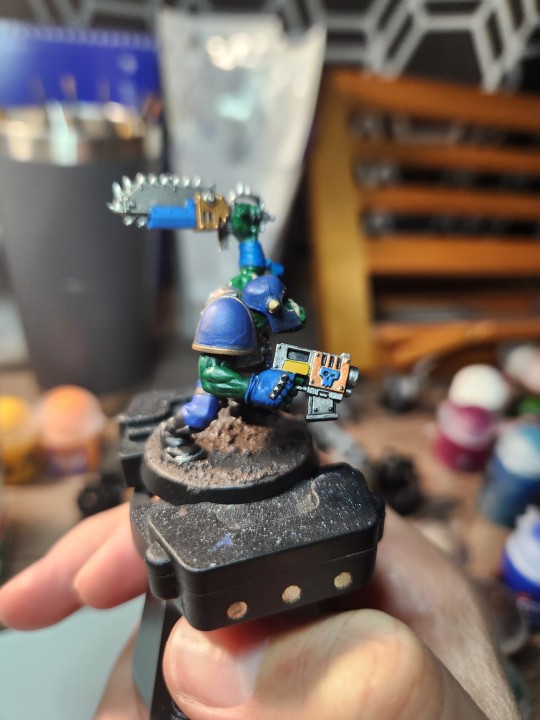
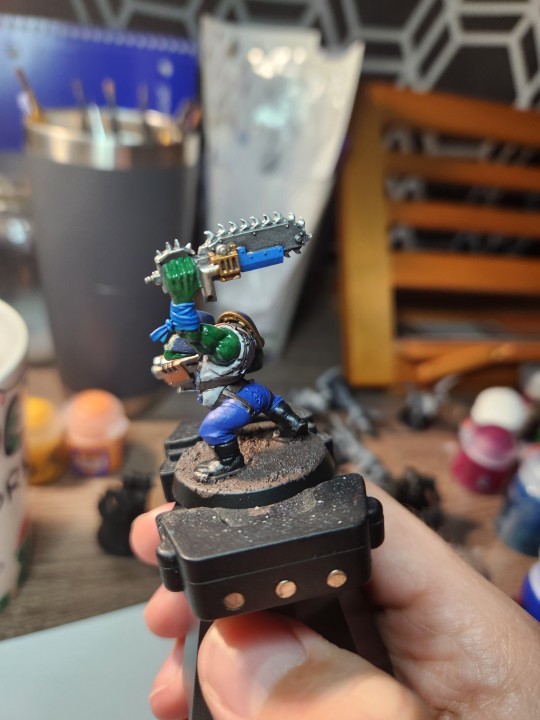

A new Boy added to Mugrobz Wrekin Krew!
9 notes
·
View notes
Text
Shropshire today, the sun shining on a field adjacent to St Mary's, Eaton Constantine, The Wrekin on the horizon.

2 notes
·
View notes
Text
Hard work never did anyone any harm (AIRGAP-COZEN)
• of Welling
• by mistake Was
• by the beadle; For
• of Dutton Whose head
• in pieces To
• of Dundee
• with her chin
• of Burton
• of figs That
• by a flea; When he
• for some beer; But they
• of the Wrekin Whose shoes
• about Dutton
• of Coblenz The length
• of Majorca
• of Cheadle
• Which he
• on a hill
• of th' Abruzzi
0 notes
Text
Primate Fairies Master List Part 2:
Primate fairies encompass humanoids, giants and apelike beings.
Europe:
Äbädä
Adrasteia (nymph)
Aengus Óg/ Óengus (Tuatha de Danaan)
Aetna (Sicilian nymph)
Adgilis Deda (Georgian)
Afonya/ Afanasii
Agrius (Gigantes)
Áine (Tuatha de Danaan)
Airmed (Tuatha de Danaan)
Akhsar (Nart)
Akhsartag (Nart)
Akola (Nart)
Albina
Albina’s sisters
Alcyoneus (Gigantes)
Alcyonides
Alektos (Giant)
Alfar
Alimbeg (Narts saga)
Alimbeg’s daughter (Narts saga)
Almas/ Almasty/ Abnauayu/ Adam-Ayu/ Adam-Dzhapais/ Adlekhe-titin/ Agatch-kishi/ Bnahua/ Kaptar/ Kiyik Adam/ Tskhiss Katsi (Georgian)
Agunda (Nart)
Alvaldi (jötunn)
Amadan Dubh
Am Fear Liath Mòr/ Dundonald Creature/ Ferla Mohr
Ana (Queen of the Keshali- Romani)
Angrboða (jötunn)
Antero Vipunen
Aoede (Muse)
Aos-sí/ Aos-sídhe/ Sìdhichean
Anu (Irish goddess)
Arawn
Arimaspi
Aristaeus (giant)
Asterius (giant)
Auloniad
Aurboða (jötunn)
Azovka
Baba Cloanța
Baba Hârca
Badb (Tuatha de danann)
Banba (Tuatha de danann)
Baugi (jötunn)
Basajaun/ Basajarau
Batraz
Béḃinn (Tuatha de danann)
Bé Chuille (Tuatha de danann)
Becuma of the White Skin
Befana
Beli (jötunn)
Belsnickel/ Bell Sniggle/ Belschnickel/ Belznickel/ Belznickle/ Pelznickel/ Pelznikel
Berchtold
Bergatrollet
Bergelmir (jötunn)
Bergfolk
Bergsrå
Bestla (jötunn)
Beuteusell
Bibyts (Narts)
Blunderboar/ Blunderbore/ Blunderbus/ Blunderbuss/ Thunderbore
Boann (Tuatha de danann)
Bodach (Gaelic)
Bodb Derg (Tuatha de danann)
Bolam Beast
Bölþorn (jötunn)
Božić Bata
Brân the Blessed
Bres (Tuatha de danann)
Brian (Tuatha de danaan)
Brigid/ Brìde/ Bríg/ Brigit
Buggane
Bugul Noz
Buka the Boogeyman
Bukavac (Slavic)
Bunadh na gcnoc/ Cuid na gcnoc/ Dream na gcnoc
Býleistr (jötunn)
Callichore (muse)
Calliope (Muse)
Cailleach/ Beira, Queen of Winter/ Cailleach Bheur
Carystus (mythology)
Celsclan (Etruscan)
Cermait (Tuatha de danaan)
Changeling
Chariclo
Chleunik (Belarus)
Chuchuna/ Gyona Pel/ Mulen/ Zemlemer
Cian (Tuatha de danann)
Circe
Clio (Muse)
Cloan ny moyrn/ Adhene
Clytius (giant)
Connla
Cormelian
Cormoran (giant)
Creidhne (Tuatha de danann)
Cú Chulainn
Custennin
Cyclops
Dactyls (Greek)
Dagda/ Eochaid Ollathair (Tuatha de danann)
Dame Rampson (Hungarian)
Dame Vénétur
Damysus
Dana/ Danu (Tuatha de danann)
Danand (Tuatha de danann)
Daoine Sidhe/ Daoine Eile/ Daoine Uaisle/ Na Uaisle
Daoine Maithe
Deiopea (nymph)
Dian Cécht (Tuatha de danann)
Divji Moz
Doamna Chiralina (Romanian)
Dökkálfar
Dzerassae
E Bukura e Dheut (Albanian)
Ecne (Tuatha de danann)
Echo (Oread)
Eggþér (jötunn)
El Apalpador
Elegast/Elbegast
Elf
Enceladus (giant)
Endeïs
Ephialtes (giant)
Erato (Muse)
Ériu (Tuatha de danann)
Ernmas (Tuatha de danann)
Etain (Tuatha de danann)
Ethniu (Tuatha de danann)
Ettin
Euryte (Greek)
Euterpe (Muse)
Euryalus (giant)
Eurydice (Auloniad)
Eurymedon (giant)
Eurytus (giant)
Fae/ Fada- Catalan)/ Faerie/ Faery/ Fairy/ Fee/ Fey/ Doñas de fuera/ Gente Menuda/ Sidheóg/ Slua Sí/ Túathgeinte
Fairy godmother
Fairy of Sweet Milk Lake (Mogarzea and his Son)
Fárbauti (jötunn)
Father Christmas
Fenodyree
Ferrishyn/ Sleih beggey
Fiacha mac Delbaíth (Tuatha de danann)
Finnish Bigfoot
Finvarra
Fjölvar (jötunn)
Flidais
Fódla (Tuatha de danann)
Fornjót (jötunn)
Frost Giant (Swiss)
Fuamnach (Tuatha de danann)
Galligantus
Gangr (jötunn)
Gargantua (Swiss)
Geirröðr (jötunn)
Gerðr (jötunn)
Germakoçi
Geryon (Greek)
Giant
Gigante
Gillingr (jötunn)
Gjálp (jötunn)
Gogmagog (giant)
Goibniu (Tuatha de danann)
Golden Hair
Goreu fab Custennin
Gration (giant)
Greip (jötunn)
Gríðr (jötunn)
Gruagach
Gruvrået
Gunnlöð (jötunn)
Gwendol Wrekin ap Shenkin ap Mynyddmawr
Gwyn ap Nudd
Gymir (father of Gerðr)
Gyre-carling
Habetrot
Haemyts
Hafgan
Hajnjeri (Albanian)
Hajotki
Hajun (Belarus)
Harðgreipr (jötunn)
Blemmyes/ Acephali/ Sternophthalmoi
Hecate
Hecaterides (Greek)
Hecaterus (Greek)
Hedley Kow
Hekaerge (Nymphai Hyperboreioi)
Helblindi (jötunn)
Helga (The Horse Gullfaxi and the Sword Gunnfoder)
Helga’s Father (The Horse Gullfaxi and the Sword Gunnfoder)
Helreginn (jötunn)
Herne The Hunter (Phantom Hunter- The Witch of Fife)
Hiid (Estonian)
Hippolytus (giant)
Hljod (jötunn)
Hopladamas (giant)
Hræsvelgr
Hrímgerðr (jötunn)
Hrímgrímnir (jötunn)
Hrímnir (jötunn)
Hrimthurs
Hroðr (jötunn)
Hrungnir (jötunn)
Hrymr (jötunn)
Hymir (jötunn)
Hyrrokkin (jötunn)
Huldufólk
Hvítálfar
Iði (jötunn)
Ileana Cosânzeana
Ingiborg (The Horse Gullfaxi and the Sword Gunnfoder)
Ingiborg’s Sisters (The Horse Gullfaxi and the Sword Gunnfoder)
Ím (jötunn)
Iynx (Greek/ Etruscan)
Ispolin (Bulgarian)
Ithome (Greek)
Iuchar (Son of Tuireann)
Iucharba (Son of Tuireann)
Jack-in-Irons
Járnsaxa (jötunn)
Jätte (jötunn)
Jatulit
Jentilak
Joulupukki
Joulumuori
Jötunn
Kalev/ Kalevin/ Kalevine/ Kalevine Poisikine/ Kalevipoiss
Katallani/ Syqenhenjeri (Albanian)
Keiju/ Keijukainen (Finnish)
Keshali (Romani)
Khmish (Nart)
Kizmida (Nart)
Korybantes
Koshera (Narts)
Krivapeta
La Fada Morgana (Catalan)
Laufey (jötunn)
Lauma/ Laumė (Lithuanian)
Leiger (Estonian)
Leikn (jötunn)
Lén (Tuatha de danann)
Leppalúði
Leshy
Liczyrzepa
Litr (jötunn)
Ljósálfar
Logi
Loki
Lord Halewijn
Luchtaine (Tuatha de danann)
Lugh (Tuatha de danann)
Mab/ Maeve/Medb/ Medb Lethderg
Mac Cecht (Tuatha de danann)
Mac Cuill (Tuatha de danann)
Mac Gréine (Tuatha de danann)
Macha
Maltese Giants
British Man- Monkey
Margot Fairies
Māte
Matuyá (Romani)
Melch Dick/ Melsh Dick
Melete (Muse)
Melpomene (Muse)
Mendeis (Greek)
Russian Menk
Menodice (Greek)
Merlin
Mese (Greek)
Meshe Adam/ Ağac Kişi (Azerbaijani)
Methone (Greek)
Miach (Tuatha de danann)
Midir (Tuatha de danann)
Mimas (giant)
Russian Mirygdy/ Mecheny
Mneme (Muse)
Mogarzea (Mogarzea and his Son)
Mögþrasir (jötunn)
Monopod/ Sciapod/ Skiapod/ Skiapode
Mouros
Morgan le Fay
Mukara (Nart)
Mukara’s wife (Nart)
Muses
Nagurashkho (Narts)
Napaeae (Greek nymph)
Narfi/ Nari
Narfi (father of Nótt)
Nart (Circassian)
Neit (Tuatha de danann)
Niamh
Nicnevin
Nuada Airgetlám
Nymph
Ogma
Ojáncanu
Olentzero
Olláparo
Olwen
Onagh
Ouph/ Ouphe
Orcolat
Oread
Óriások (Hungarian)
Pallas (giant)
Psabida (Nart)
Pataricu
Peikko (Finnish)
Pelzebock
Père Fouettard
Père Noël/ Papá Noel
Periboea (daughter of the Giant Eurymedon)
Perria (Albanian)
Picolous (giant)
Þjazi (jötunn)
Pkharmat
Plant Annwn
Polevoy
Pólnica
Poludnitsa
Polybotes (giant)
Polyhymnia (Muse)
Polyphemus
Porphyrion (giant)
Þrívaldi (jötunn)
Pronoe (nymph mother of the Trojan Lassus)
Þrúðgelmir (jötunn)
Þrymr (jötunn)
Pula Arena Fairies
Qaydukh (Nart)
Quayda (Nart)
Queen of the Dell- https://www.worldoftales.com/European_folktales/Welsh_folktale_12.html#gsc.tab=0
Qulyabanı
Rebecks (giant)
Rhaion (giant)
Rhiannon
Rindr
Ruadán
Rübezahl
Saarevaht (Estonian)
Sadhbh, the Mother of Oisín
Saint Christopher
Samodiva
Sansuna (giantess)
Santa Claus
Sânziană
Satanaya/ Setenaya/Shatana (Nart)
Sebile
Seelie
Semystra (Greek)
Shauwai (Nart)
Sidhe
Sister (Elvehøj)
Skadi (jötunn)
Sökkmímir (jötunn)
Sosruko/ Soslan
Stallo (Sámi)
Stolemë / Stolemy
Sumarr
Šumske dekle
Suttungr
Suur Tõll (Estonian)
Syrdon
Tante Arie
Tanyushka
Tartalo
Tegid Foel
Télapó
Terpsichore (Muse)
T’Haghadlej (Nart)
Thalia (Muse)
The Beast of Tunbridge Wells
The Bella Mbriana (Italian)
The Carl of the Drab Coat
The Fairies of the Dell- https://www.worldoftales.com/European_folktales/Welsh_folktale_12.html#gsc.tab=0
The Green Children
The Green Knight
The Good Neighbors
The King of Elfland (Childe Roland)
The Nameless Son (Nart)
The Mistress of the Copper Mountain/ The Malachite Maid
The Old People (Beloved Name Azovka)
The People of Peace
The People of Mag Mell (The Voyage of Bran)
The Phantom Hunters (Herne The Hunter, The Witch of Fife)
The Red Ettin
The Troll
The Troll's Daughter
The Yule Lads
Thoas (giant)
Thökk/ Þökk (jötunn)
Thunderdell/ Taranau (Welsh name)/ Thunderbore/ Thunderdale/ Thunderdel/ Thunderel/ Thundrel
Thurse
Three-Headed Giant (The Witch in the Stone Boat)
Tirgus Māte (Lithuanian)
Titania
Tlepsh
Tom Hickathrift/ Jack Hickathrift
Tuatha de Danaan (compare to Patupaiarehe/ Tūrehu/ Pakepakehā, Menehune, Mimis)
Tughuzhipsh (Narts)
Tündér/ Tündérek (Hungarian)
Tündér Ilona (Hungarian)
Tündér Maros
Tryamour
Tylwyth Teg
Uaisle na gcnoc
Ulfrún
Uon (Nart)
Urania (Muse)
Uriaș
Urisk/ Ùruisg
Uryzmaeg
Útgarða-Loki/ Utgard-Loki/ Utgardsloki/ Skrýmir
Vadleány
Vafþrúðnir
Ved (Croatian)
Veela/ Vila
Vegoia (Etruscan)
Víðblindi (jötunn)
Vilež
Vörnir (jötunn)
Vörsa (Komi)
Vosud (jötunn)
Warkhag (Nart)
Washtirji (Nart)
Wild Man/ Om Pelòs/ Om Salvàrech/ Òmm Selvadech/ Woodwose/ Zan De Rame
Wrnach the Giant
Ymir
Ysbaddaden
Zana/ Zana e malit
Zână
Zâna Zânelor (Romanian)
0 notes